OSHA is partnering with the National Association of Tower Erectors and the Federal Communications Commission to protect workers in the telecommunications industry.

OSHA is partnering with the National Association of Tower Erectors and the Federal Communications Commission to protect workers in the telecommunications industry.

OSHA's Site-Specific Targeting program directs resources to workplaces with the highest injury and illness rates.
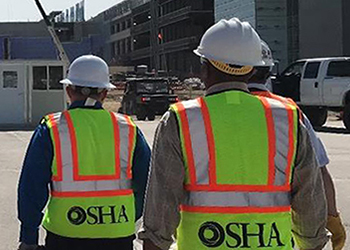
OSHA has resources to help protect workers in the construction industry from exposure to the coronavirus.

Make sure you are properly protected from cold stress and other winter weather hazards.

As the holiday shopping season approaches, train workers on job hazards and establish safe work practices to prevent exposure to the coronavirus.
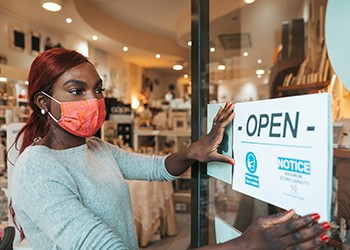
New respiratory protection guidance was issued for long-term care facilities during the coronavirus pandemic.

The Occupational Safety and Health Administration (OSHA) has published a set of Frequently Asked Questions (FAQ) on how N95 respirators effectively protect wearers from coronavirus exposure. OSHA is aware of incorrect claims stating that N95 respirator filters do not capture particles as small as the virus that causes the coronavirus. OSHA’s new FAQ explains why an N95 respirator is effective at protecting users from the virus.
Visit OSHA’s coronavirus webpage frequently for updates. For further information about the coronavirus, please visit the Centers for Disease Control and Prevention.

OSHA’s On-Site Consultation Program in New Jersey inspected masks, safety glasses and other PPE to help protect frontline workers.

OSHA issued new guidance on fit testing for tight-fitting powered air-purifying respirators during the pandemic.
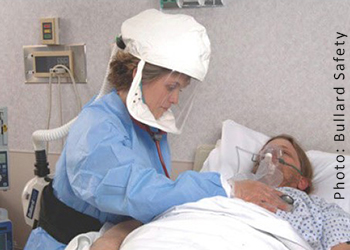
The U.S. Department of Labor’s Occupational Safety and Health Administration (OSHA) has issued temporary guidance for enforcing initial and annual fit-testing requirements related to tight-fitting powered air-purifying respirators. The action marks the Department’s latest step to ensure the availability of respirators and follows President Donald J. Trump’s Memorandum on Making General Use Respirators Available.
 Employers should ensure that they have a plan to respond to a natural disaster or other emergencies in the workplace.
Employers should ensure that they have a plan to respond to a natural disaster or other emergencies in the workplace.
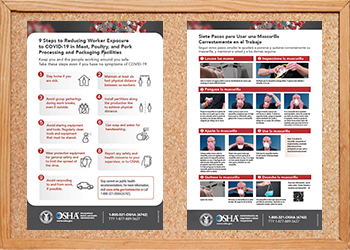 Free printed copies of posters and guidance booklets on protecting workers from the coronavirus can be ordered from OSHA’s publications page.
Free printed copies of posters and guidance booklets on protecting workers from the coronavirus can be ordered from OSHA’s publications page.
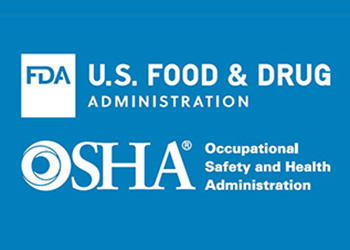 OSHA and the Food and Drug Administration developed a checklist to help protect food industry workers during the pandemic.
OSHA and the Food and Drug Administration developed a checklist to help protect food industry workers during the pandemic.
 |
| (Fraudulent Document) |
 Employers should ensure that they have a plan to respond to a natural disaster or other emergencies in the workplace.
Employers should ensure that they have a plan to respond to a natural disaster or other emergencies in the workplace.
 Free printed copies of posters and guidance booklets on protecting workers from the coronavirus can be ordered from OSHA’s publications page.
Free printed copies of posters and guidance booklets on protecting workers from the coronavirus can be ordered from OSHA’s publications page.
 OSHA and the Food and Drug Administration developed a checklist to help protect food industry workers during the pandemic.
OSHA and the Food and Drug Administration developed a checklist to help protect food industry workers during the pandemic.
 The seventh annual National Stand-Down to Prevent Falls in Construction has been rescheduled for September 14-18.
The seventh annual National Stand-Down to Prevent Falls in Construction has been rescheduled for September 14-18.
 OSHA reminds employers of their duty to protect workers from the risks and dangers of heat exposure.
OSHA reminds employers of their duty to protect workers from the risks and dangers of heat exposure.
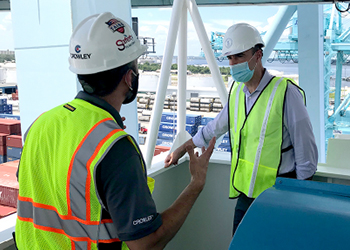 U.S. Secretary of Labor Eugene Scalia addressed economic re-opening and workplace safety during a visit to Florida.
U.S. Secretary of Labor Eugene Scalia addressed economic re-opening and workplace safety during a visit to Florida.
 The seventh annual National Stand-Down to Prevent Falls in Construction will be held Sept. 14-18 to correspond with Construction Safety Week.
The seventh annual National Stand-Down to Prevent Falls in Construction will be held Sept. 14-18 to correspond with Construction Safety Week.
 More answers to frequently asked questions about the pandemic and worker safety are now available on OSHA’s website.
More answers to frequently asked questions about the pandemic and worker safety are now available on OSHA’s website.

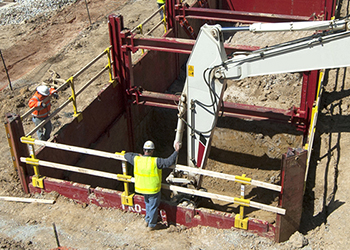 A webinar on trench safety hosted by OSHA and the American Society of Safety Professionals is available free online.
A webinar on trench safety hosted by OSHA and the American Society of Safety Professionals is available free online.

 OSHA partnered with the Centers for Disease Control and Prevention on COVID-19 guidance for agricultural workers.
OSHA partnered with the Centers for Disease Control and Prevention on COVID-19 guidance for agricultural workers.
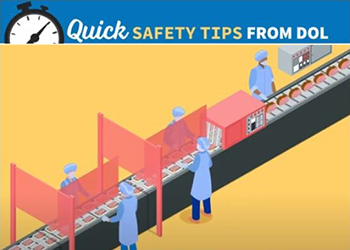 A new animated video provides quick tips on the proper stationing of workplaces with assembly lines and processing conveyors to keep workers safe from COVID-19.
A new animated video provides quick tips on the proper stationing of workplaces with assembly lines and processing conveyors to keep workers safe from COVID-19.
 Falls remain the leading cause of death for construction workers. The National Campaign to Prevent
Falls in Construction was created in 2012 in order to address the hazard, and The Stand-Down event
was added in 2014. The goal of the Stand-Down is to draw attention to the severity of fall hazards and
importance of preventing them. This nation-wide weeklong event is an opportunity for employers to
pause work and have conversations with workers about fall hazards, protective methods, and their
company’s safety policies, goals and expectations. Please visit https://www.osha.gov/StopFallsStandDown
Falls remain the leading cause of death for construction workers. The National Campaign to Prevent
Falls in Construction was created in 2012 in order to address the hazard, and The Stand-Down event
was added in 2014. The goal of the Stand-Down is to draw attention to the severity of fall hazards and
importance of preventing them. This nation-wide weeklong event is an opportunity for employers to
pause work and have conversations with workers about fall hazards, protective methods, and their
company’s safety policies, goals and expectations. Please visit https://www.osha.gov/StopFallsStandDown
 OSHA’s new webpage focuses on protecting workers from exposure to the novel coronavirus.
OSHA’s new webpage focuses on protecting workers from exposure to the novel coronavirus.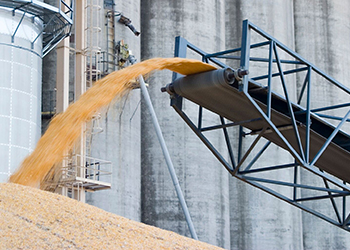 Learn how to keep workers safe at grain handling facilities with OSHA resources.
Learn how to keep workers safe at grain handling facilities with OSHA resources.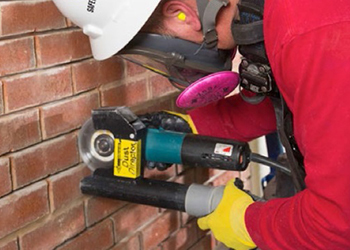 OSHA updates emphasis program to better protect workers from silica exposure.This Instruction describes policies and procedures for implementing a
National Emphasis Program (NEP) to identify and reduce or eliminate
worker exposures to respirable crystalline silica (RCS) in general
industry, maritime, and construction. The NEP targets specific
industries expected to have the highest exposures to RCS.
OSHA updates emphasis program to better protect workers from silica exposure.This Instruction describes policies and procedures for implementing a
National Emphasis Program (NEP) to identify and reduce or eliminate
worker exposures to respirable crystalline silica (RCS) in general
industry, maritime, and construction. The NEP targets specific
industries expected to have the highest exposures to RCS.
 Read OSHA’s new bulletin on how to properly cover grease traps to prevent workers from tripping or falling into them.
Read OSHA’s new bulletin on how to properly cover grease traps to prevent workers from tripping or falling into them.
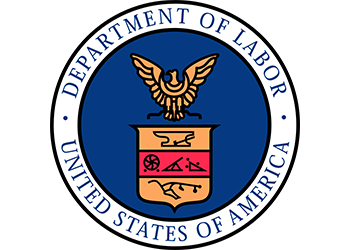 OSHA adjusted penalty amounts for 2020 to reflect inflation. States that operate their own Occupational Safety and Health Plans are required to adopt maximum penalty levels that are at least as effective as Federal OSHA's.
OSHA adjusted penalty amounts for 2020 to reflect inflation. States that operate their own Occupational Safety and Health Plans are required to adopt maximum penalty levels that are at least as effective as Federal OSHA's.
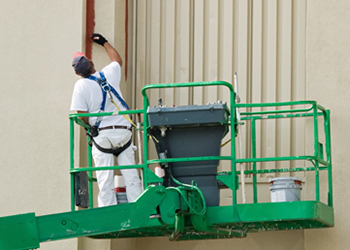 OSHA issued corrections to the Walking-Working Surfaces, Personal Protective Equipment, and Special Industries standards.
OSHA issued corrections to the Walking-Working Surfaces, Personal Protective Equipment, and Special Industries standards.